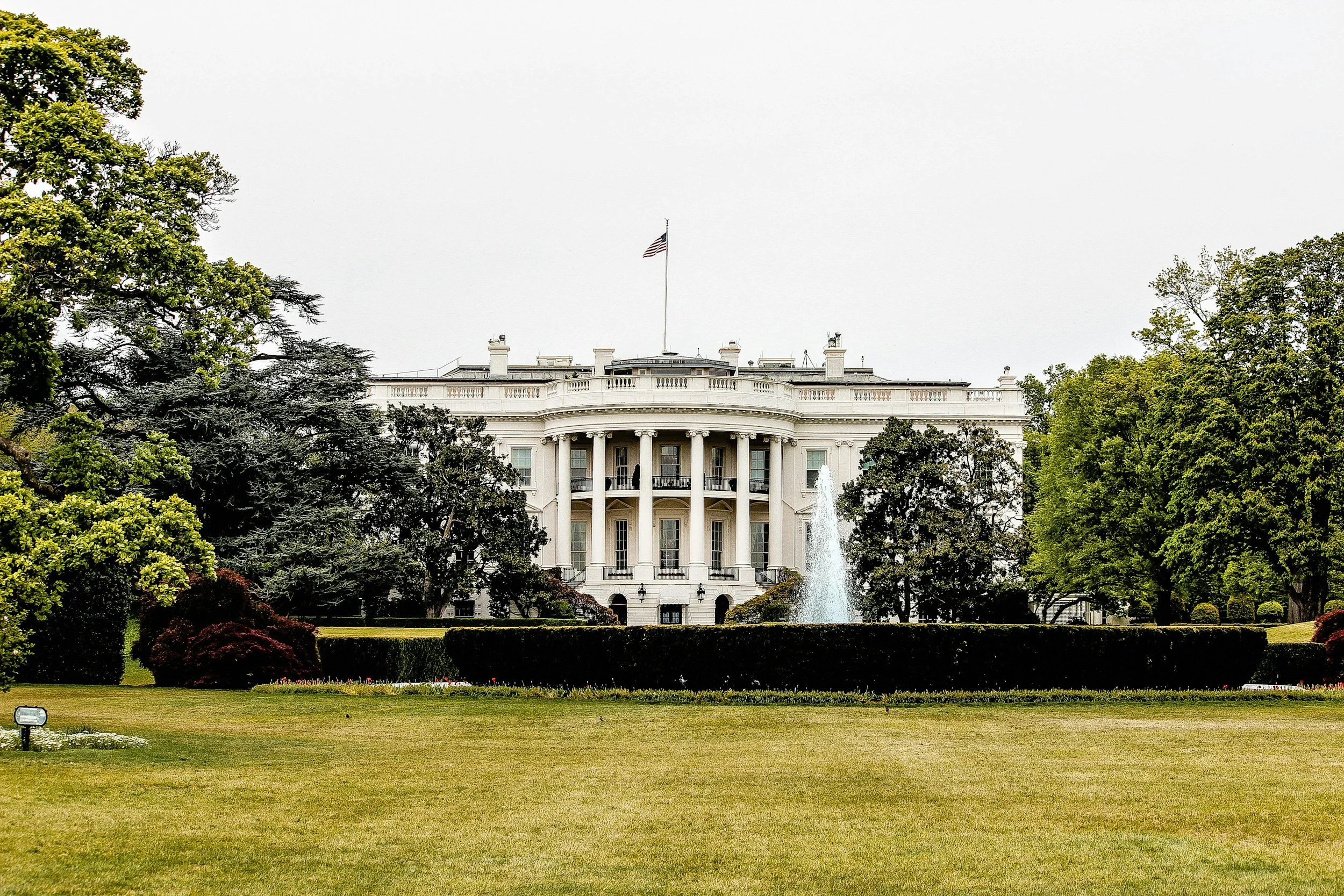Keir Starmer: A Psychological Profile of Leadership
Sir Keir Starmer, the current Prime Minister of the United Kingdom and leader of the Labour Party, presents a complex profile shaped by his background as a lawyer and his transition into politics. He is often described as having “working-class roots, a forensic legal style and a ruthless approach to politics”. This report examines Starmer’s leadership style, communication and interpersonal behaviour, consistency and evolution of public positions, and comparisons with other leaders. Drawing on his public statements, interviews, and analyses by colleagues and commentators, we identify major themes in his personality and political behavior. Despite a calm and understated public persona, Starmer’s conduct reveals a driven and strategic leader operating with a blend of pragmatism and principle.
Starmer exhibits a methodical, evidence-based leadership style influenced by his background in law. He focuses on solving problems through practical analysis rather than ideology. Known for his caution and strategic planning, he maintains a high level of control over decisions, enforces party discipline strictly, and is highly driven.
Psychologically Starmer shows a high need for power, belief in control over events, and distrust of others. He also exhibits high conceptual complexity, allowing him to weigh multiple perspectives. These traits combine to form a leader who is both proactive and skeptical, but capable of building strong teams when loyalty is assured.
Starmer communicates with clarity and restraint, favoring facts over emotional appeals. His style is considered professional and earnest, if occasionally dry. He relies on measured tones and avoids populist rhetoric, which supports his image as a competent, no-nonsense leader.
This article presents a psychological interpretation of publicly observable behaviors, speeches, and decisions. It is based entirely on publicly available sources and does not involve any direct psychological assessment or personal interviews. The analysis reflects informed opinion, not clinical diagnosis. Interpretations are intended for educational and analytical purposes and should not be construed as definitive judgments about the individual’s mental health or private beliefs.
Leadership Style and Decision-Making Patterns
Starmer’s leadership style is frequently characterized by caution, meticulousness, and pragmatism. As a former Director of Public Prosecutions, he developed a habit of building cases methodically on “precedent, law, facts,” earning a reputation as a “judge’s lawyer” rather than a charismatic “jury’s lawyer”. In parliamentary settings, his approach has been forensic – his lawyerly cross-examinations in Prime Minister’s Questions were noted for deflating the bluster of opponents like Boris Johnson. This evidentiary and problem-solving orientation reflects Starmer’s belief in developing policy by solving problems, not through grand theory. Close observers note that he “doesn’t come to the table with ideological presuppositions,” focusing instead on practical solutions. His colleague Josh Simons remarks that Starmer “believes in pragmatism” over rigid doctrine, a trait that has defined his decision-making in both opposition and government.
Beneath his cautious exterior, Starmer is highly driven and ambitious. Tom Baldwin, a journalist and one of his biographers, describes him as “very, very driven, quite relentless,” with an “oversized view of his capacity to bring change”. Indeed, Starmer demonstrates a strong need for control and power in steering events – political psychologists assessing his traits found his belief in his ability to control events and his need for power to be particularly high compared to other British leaders. Leaders with such traits are proactive and confident in shaping outcomesblogs. Starmer’s own track record supports this: after becoming Labour leader in 2020, he swiftly moved to reshape his party, tracking it to the center to make it electable once again. He was willing to take bold internal measures, for example by suspending his predecessor Jeremy Corbyn and expelling or marginalizing members associated with Labour’s antisemitism controversies. His allies credit him with “purging members who had contributed to the public sense that Labour had ‘an antisemitism problem,’” while critics label him opportunistic for the same actions. These decisive steps illustrate a strategic leader who, when he deems it necessary, plays hardball beneath a calm exterior. As one political expert observed, “he’s proved he’s quite ruthless in terms of changing his party” – a ruthlessness that may extend to government decisions as well.
Starmer’s decision-making patterns blend caution with long-range strategic planning. He is often described as a “typically cautious” politician, inclined to deliberate carefully and warn of “very difficult choices” ahead. His tenure as opposition leader began in a restrained, risk-averse mode, sometimes derided as an overly “constructive opposition”. Yet he has shown the capacity to pivot and take calculated risks when context demands. Faced with Britain’s deep crises in recent years, he has signaled an openness to bold reforms, stating that “We can’t go on like this” and promising “a completely new way of governing” to achieve a “decade of national renewal”. This hints at an evolution from caution toward controlled boldness in his leadership. Indeed, some observers sense that Starmer finds being bolder quite exciting compared to the “miserably tentative” first phase of his leadership. When making decisions, Starmer is known to gather extensive information and consider multiple perspectives, reflecting what analysts identify as a high level of conceptual complexity in his thinking. This means he sees nuance and entertains different viewpoints, likely leading to well-balanced decisions – albeit sometimes at the cost of speed. A former legal colleague recalled that Starmer was “always looking 10 miles down the road” at how a case or situation could develop, planning several moves ahead. This forward-looking, evidence-based mindset carries into his political leadership, where he prefers to anticipate challenges and craft responses grounded in facts.
While generally methodical, Starmer will assert control decisively once his course is set. Political psychologists note his profile shows very high distrust of others’ intentions, meaning he is keenly attuned to loyalty and sensitive to threats. In practice, he has been quick to remove those he deems unsuitable or disloyal in his team. For example, his handling of shadow cabinet personnel has been brisk – if an appointee proves a “wrong fit or [has] crossed a line,” Starmer is fast and ruthless in dispatching them, a pattern commentators compare to Clement Attlee’s famous no-nonsense dismissals. This reveals an executive decisiveness: once Starmer’s judgment is that someone or something is undermining his project, he does not hesitate to act. It aligns with his internal need for power – he takes ownership of decisions and enforces discipline to maintain control over his agenda. In summary, Starmer’s leadership style merges careful, analytical planning with a readiness to enforce tough decisions. He leads in a managerial fashion, emphasizing competence and problem-solving, yet beneath the technocratic surface lies a steely resolve to assert authority and drive through changes he deems necessary.
Communication and Interpersonal Behavior
In public communication, Starmer is measured, factual, and reserved. He is not a flash orator and freely admits he lacks the bombastic rhetorical flair of figures like Winston Churchill. Observers note that “Starmer lacks messianic qualities” – unlike a charismatic leader such as Tony Blair, Starmer “can’t use personal charisma to suggest that a government led by him would be fresh and dynamic”. His speaking style is often described as earnest but somewhat dry. Both supporters and critics have pointed out an almost technocratic tone to his public addresses. As a barrister, he honed an inscrutable and dispassionate style of explanation, focused on clarity and facts over passion. This carries into his political speeches and interviews, which can come across as “grey” or understated in emotional tone. During his exchanges in Parliament, Starmer favors pointed, forensic questioning rather than rallying cries – a demeanor that sometimes prompts detractors to label him dull. Even Starmer’s allies concede he is “not going to inspire people with big speeches” or slogans; instead, as one biographer quipped, “What he might do is fix things.” This captures how Starmer communicates a message of competence and steady change, rather than stirring the masses with visionary rhetoric.
Interpersonally, Starmer projects professionalism and a certain guardedness. Colleagues describe him as a “very private man” who keeps his personal life distinctly separate from his politics. He rarely divulges details about his family and has even kept his children out of the public eye. This private nature contributes to an image of being somewhat distant or formal in one-on-one interactions. However, within his working teams and party, Starmer places emphasis on relationships and morale. Analyses of his leadership traits indicate he has a high relationship orientation, meaning he is attentive to team cohesion and the needs of those he leads. In practice, Starmer often speaks of uniting his party and country, seeking common ground after years of polarisation. He appears to listen seriously to advisers and stakeholders, reflecting an ability to see nuance and incorporate different viewpoints (a function of his high conceptual complexity). This suggests that, despite a top-down streak in enforcing discipline, Starmer is inclined to consult widely and value consensus where possible.
Yet there is a contrasting side to his interpersonal style: a distrustful and wary streak noted by psychologists evaluating his public statements. Starmer scores very high in distrust, implying he is often skeptical of others’ motives and maintains a vigilant stance, especially toward political rivals or internal dissenters. Leaders with this trait “highly value loyalty, tend to be hypersensitive to criticism, and may become confrontational”. Indeed, Starmer has shown little hesitation in confronting or expelling those in his orbit whom he perceives as undermining party unity or credibility – a tendency evident in his firm handling of Labour’s far-left faction. His interpersonal approach toward opponents is similarly firm but controlled; he rebukes and criticizes without resorting to personal theatrics. Some on the left accuse him of having a stern, managerial manner – “a middle manager scolding his workers, or an unpopular stepdad who’s lost control of the kids,” in the sharp words of one former Corbyn aide. Such criticisms highlight that Starmer’s sober style can sometimes read as aloof or overly strict to those expecting more emotive leadership.
Despite these critiques, Starmer has worked to improve his connection with the public. He often shares personal anecdotes – for instance, about his late mother’s career as a nurse or his father’s life as a toolmaker – to underscore his working-class credentials and values. These stories humanize an otherwise reserved figure and align with his emphasis on integrity and duty. Moreover, his high focus on relationships suggests that inside his leadership team he prioritizes loyalty and team morale. He reportedly maintains respectful, if business-like, relations with colleagues and even with opponents across the aisle. Those who know him well say that beneath the calm exterior, he can play hardball when needed, but also that he is personable and humorous in private settings. The duality of Starmer’s interpersonal behavior – courteous and collaborative on one hand, unyielding and demanding on the other – reflects a leader who seeks balance between approachability and authority. In summary, Starmer’s communication is defined by restraint and clarity over charisma, and his interpersonal dealings combine a genuine concern for people’s needs with an insistence on loyalty and competence. This professional, no-frills approach has at times been a political liability in a media age that rewards showmanship, but it also conveys an image of reliability and conscientious leadership.
Consistency and Evolution of Public Statements Over Time
Starmer’s public positions have evolved notably over his relatively short political career, raising questions about consistency and principle. Early in his tenure as Labour leader, he issued a set of 10 pledges in 2020 that aligned with the party’s leftward manifesto at the time – including commitments such as public ownership of utilities, higher taxes on the wealthy, and the abolition of university tuition fees. Over time, many of these promises were watered down or abandoned as Starmer repositioned Labour toward the political center. By 2023, critics on the left were accusing him of betraying the platform on which he was elected leader. Starmer has denied “abandoning” his leadership pledges, arguing that they remain “important statements of value and principle” even if specific policies have been “adapted” to changing circumstances. He cites unforeseen global events – the COVID-19 pandemic, Russia’s war in Ukraine, and economic turmoil – to justify recalibrating his policy commitments. For example, on the issue of energy utilities, Starmer initially supported nationalization but later shifted stance after commissioning an analysis in 2022; when evidence showed that buying out energy firms would cost a fortune and not immediately lower consumer bills, he opted instead for a temporary price freeze funded by a windfall tax. This episode illustrates how Starmer tends to ground his policy shifts in practical considerations. He frames these changes not as flip-flops, but as pragmatic responses to new realities – a claim that opponents take with skepticism, but which aligns with his self-image as a problem-solver rather than an ideologue.
One of the most prominent evolutions in Starmer’s stance has been on Brexit. As the shadow minister in charge of Brexit policy under the previous leadership, Starmer was a champion of holding a second referendum and was seen as a pro-EU voice. That position was part of an ambiguous Labour strategy in 2019 (being “neither for Brexit nor against it” while advocating another vote) – a muddled stance that “probably contributed to Labour’s colossal loss” in that year’s general election. After that defeat, Starmer pivoted: as leader he accepted that Brexit would not be reversed in the near term, ruling out rejoining the EU and instead adopting the slogan “Make Brexit Work.” This marked a significant shift from his prior advocacy for Remain, reflecting an effort to rebuild trust with Leave-voting segments of the electorate. Similarly, Starmer’s tone on economic policy shifted from initially echoing some of his predecessor’s anti-austerity, big spending language to a much more fiscally cautious posture by 2023. He began emphasizing “difficult choices” and the need to restore economic credibility, even if it meant tempering earlier promises. These changes have led observers to ask: what does Starmer really stand for at his core? According to an Ipsos poll in mid-2024, fully half of respondents said they didn’t know what Starmer stood for – beyond a general promise of “change”. This uncertainty has been fueled by Starmer’s deliberate strategy of broadening Labour’s appeal; he has at times embraced ambiguity, allowing different audiences to project their hopes onto him. One biographer who had extensive access to Starmer even confessed that he is “hard to pin down” as a person and politician.
From a psychological perspective, Starmer’s evolution underscores a tension between values and adaptability. He has core principles rooted in his upbringing and career – a belief in equality of opportunity, support for the National Health Service, respect for the rule of law – that appear to have remained consistent. However, the expression of those principles in policy has varied with context. Starmer himself argues that while specific policies changed, the “values and principles” underlying them (such as social justice or economic fairness) are unchanged. Detractors are not convinced. Figures from Labour’s left, like former adviser James Schneider, contend that Starmer “stands for very little” and too readily “reflects the ideas of the people that are around him.”They point out that he campaigned as a unity candidate, even presenting himself as a socialist heir to Corbyn’s agenda, only to then distance himself from that agenda once in power. To critics, this pattern suggests political expediency and an excessive caution that could translate into timidity in government. Starmer’s defenders, on the other hand, see consistency in his pragmatism. They argue that his overriding goal has been to make Labour electable and capable of implementing change, which necessitated shedding policies that would hamper a return to power. In their view, Starmer’s lodestar is efficacy – he will consistently choose the path that brings Labour closer to the ability to deliver on its promises, even if that means adjusting those promises.
Perhaps the best way to describe Starmer’s ideological journey is that he has moved from the left-activist milieu of his youth to a center-left managerial stance, in line with what he judges the country’s needs and the electorate’s appetite to be. It is a journey rife with apparent contradictions. As one profile noted, “He was a lefty lawyer who defended vegan anarchists... yet he delighted capitalists by putting ‘wealth creation’ at the heart of the Labour Party platform” in 2024. He once opposed the monarchy on principle, yet now serves the King weekly as a loyal constitutional prime minister. Starmer seems comfortable reconciling these shifts as part of what he calls a “pragmatic radicalism” – changing what must be changed in order to advance core goals. The major theme in the evolution of his public statements is flexibility. While this adaptive approach has drawn criticism and sown some public confusion, it also signals that Starmer’s leadership is highly responsive to context. His overarching narrative has settled on the promise of competent, serious change – a far cry from the ideological fervor of his immediate predecessor, but arguably more in tune with a war-weary, economically strained Britain. Time will test whether this adaptive consistency in approach can yield tangible results and define Starmerism in hindsight.
Productive Aspects
Critical Aspects
Comparisons to Other Political Leaders in Similar Roles
Political commentators frequently compare Starmer to previous British leaders to contextualize his style and potential. One striking parallel drawn is with Clement Attlee, the post-war Labour Prime Minister. Like Attlee, Starmer is viewed as modest and reserved in character, with a background in law and a preference for substance over showmanship. Both men’s speaking styles were seen as dry and factual, especially when juxtaposed against charismatic opponents (Attlee faced Winston Churchill’s oratory, just as Starmer faced Boris Johnson’s theatrics). A King’s College London professor argues that Starmer “most closely resembles Clement Attlee” out of any past leader. Attlee was known for his no-nonsense management of government and his ruthless efficiency in dealing with underperforming ministers – he once earned the nickname “the best butcher since the war” for sacking colleagues who didn’t meet his standards. Starmer has shown a similar streak. As noted, he has developed a “track record” of being fast and ruthless in his despatching of those deemed not up to the mark or disloyal. This comparison suggests that Starmer, much like Attlee, might prioritize competent administration and collective effort over personal cult of personality. It also implies that if faced with a large reform agenda (Attlee built the NHS and welfare state after WWII), Starmer could methodically pursue a transformative program – indeed, he has explicitly invoked Attlee’s legacy, stating that he wants his government to be compared to the transformational post-war administration Attlee led.
Starmer’s repositioning of Labour toward the political center has inevitably invited comparisons with Tony Blair. Like Blair in the 1990s, Starmer has worked to modernize the party and appeal to middle England, distancing Labour from hard-left positions. Business figures have even praised Starmer for aligning with “commercial capitalist” values in a way that echoes Blairite centrism. However, important differences are noted. Blair possessed a rare personal charisma and a confident, emotive communication style that energized voters – qualities Starmer openly lacks. A Guardian analysis put it bluntly: “Unlike Tony Blair... Starmer can’t use personal charisma” to energize the public. Where Blair in 1997 campaigned on optimistic buzz and the mantra “things can only get better,” Starmer’s appeal is more sober, rooted in the promise of integrity and competence amid national crisis. Some have speculated that Starmer might nonetheless be a transformative leader “without the baggage of the Iraq War” – a kind of 2024 version of Blair who could potentially reshape Britain to an even greater degree, given today’s deeper problems. That hope hinges on Starmer compensating for his lack of “messianic” flair with a depth of reform equal to the moment’s challenges. Notably, Starmer has recruited figures from the Blair/Brown era as advisors and has echoed certain New Labour themes (for instance, being “tough on crime” and pro-business). Yet he also signals a willingness to go further than New Labour in overhauling public services and the economy, if necessary, acknowledging that merely tinkering at the edges would not suffice in today’s context. In sum, while Starmer shares Blair’s centrist realignment of Labour, he diverges in style – offering managerial calm where Blair offered inspiration – and he may govern more boldly out of necessity, albeit in a characteristically careful way.
Comparisons have also been drawn with Starmer’s immediate Conservative counterparts. With Boris Johnson, the contrast could not be sharper in personality and approach. Johnson was a flamboyant, populist showman with a chaotic management style, whereas Starmer is methodical, rule-oriented, and serious. Interestingly, research in leadership psychology finds that despite their stylistic differences, Starmer and Johnson both score very high on certain traits like need for power and belief in their ability to control events. This suggests that both men are instinctively assertive leaders determined to dominate the political agenda, even if one cloaks it in jokey bravado and the other in technocratic resolve. However, they diverge on other traits: Starmer exhibits far greater conceptual complexity than Johnson (meaning Starmer is more comfortable with nuance and complexity, whereas Johnson tended toward simpler, slogan-driven views). Furthermore, Starmer’s high distrust of others is something he interestingly shares with Rishi Sunak, the former Conservative Prime Minister, whereas Johnson was rated as only average in distrust. Like Starmer, Sunak was seen as a competent, if cautious, technocrat. Both men came from professional backgrounds (law and finance, respectively) and projected an image of pragmatic problem-solving over ideology. Both also had to navigate deeply divided parties. Yet, as a Labour leader, Starmer had to go further in redefining his party’s identity post-Corbyn, an internal battle arguably more arduous than what Sunak faced in his shorter premiership. Starmer and Sunak did share an emphasis on fiscal prudence and loyalty to institutions (for example, neither entertained radical breaks from the civil service or judiciary, unlike some populists). Starmer’s focus on relationship-building and consensus also mirrored Sunak’s cordial, managerial tone, though Starmer’s lower in-group bias suggests he might be even more willing than Sunak to reach across divides and form broad agreements.
Within the Labour tradition, Starmer has inevitably been contrasted with his predecessor Jeremy Corbyn. Corbyn’s leadership was defined by a strong ideological compass and an emotive, movement-style approach that galvanized a base but struggled to win broad electoral trust. Starmer, in reaction, has taken a diametrically different path – emphasizing party unity under more moderate principles, enforcing internal discipline, and presenting himself as a safe pair of hands. In demeanor, Corbyn was an activist and campaigner, often unscripted and warm with crowds, whereas Starmer comes off as a polished professional, more at home in parliamentary or courtroom debate than on the protest stage. This makes Starmer more comparable to earlier Labour moderates like Gordon Brown or Neil Kinnock – serious, policy-focused figures who labored to make the party electable after periods of left-wing dominance (indeed, Kinnock’s fight against Militant in the 1980s foreshadows Starmer’s marginalization of the hard left now). The key difference is that Starmer has succeeded in actually bringing Labour to power (as of 2024), whereas Kinnock did not; and unlike Brown, who was seen as a more traditional socialist at heart, Starmer is harder to categorize ideologically (earning him the “hard to pin down” reputation).
International comparisons have also been floated. Some analysts liken Starmer to Joe Biden in the United States – both older, center-left leaders pitching themselves as restorers of normalcy and competent governance after periods of tumult (Trump for Biden, Johnson/Truss for Starmer). Like Biden, Starmer has a temperate personality and tends toward coalition-building. However, Starmer’s style is even more reserved and his rise to leadership more recent, meaning he does not have decades of retail politics experience that Biden had. Another point of reference is Angela Merkel of Germany – a cautious, pragmatic leader with a background in a technical field (science for Merkel, law for Starmer) who was sometimes criticized for lack of vision yet widely respected for competence. If Starmer’s premiership endures, he may gravitate toward a Merkel-like incrementalism combined with steady moral seriousness.
In conclusion, comparisons suggest that Keir Starmer fits into the mold of leaders who prioritize pragmatism, stability, and competence, standing apart from the charismatic populists or visionary ideologues of his era. His closest analogues are figures like Attlee or Merkel who led through consensus and administrative skill, rather than personal magnetism. Yet Starmer also shows flashes of a distinct profile – the former prosecutor’s ruthlessness and the political fixer’s flexibility – that set him apart from any direct predecessor. As one analysis summed up, Starmer is “both proactive and nuanced” as a leader, sharing some traits with recent Conservative prime ministers but diverging in important ways. Ultimately, how he is remembered will depend on his effectiveness in applying these traits to Britain’s challenges. For now, viewing Starmer alongside other leaders highlights his identity as a new breed of technocratic politician: skeptical but relationship-oriented, cautious but occasionally bold, and determined to leave his mark through competence over charisma.
Simply Put
Keir Starmer’s psychological and leadership profile reveals a man who is methodical, principled in a pragmatic way, and quietly forceful. His leadership style is defined by careful deliberation paired with a readiness to act decisively when needed. As a communicator, he favors clarity and factuality over grandiosity, projecting honesty and steadiness albeit at the risk of appearing dull. Over time, Starmer has shown an adaptive streak – he is willing to evolve his public stances in response to changing conditions or strategic necessities, even if it opens him to charges of inconsistency. The major themes in his personality that emerge from observations and analyses include high ambition and drive, cautious rationality, a need for control, and a commitment to consensus tempered by an instinct to confront threats. He combines a high need for power and control with a high distrust of potential adversaries, resulting in a leadership approach that is at once vigilant and proactive. At the same time, his high conceptual complexity and relationship orientation mean he is inclined to weigh options carefully and keep his team cohesive.
Starmer stands out among contemporary leaders for eschewing populist theatrics in favour of what he views as grown-up politics. In a polarized era, he has tried to cast himself as a unifier who can appeal across segments of society by being “many things to many people”. This chameleon-like quality has been a double-edged sword: it helped propel him to power, but it also leaves questions about his authentic vision. Nonetheless, the evidence from his career and behavior indicates that Starmer’s guiding ethos is one of problem-solving public service. Whether defending human rights in court or formulating policy, he shows a preference for facts, analysis, and incremental progress over ideology or emotion. This psychological makeup aligns with leaders who achieve lasting change through persistence and competence. As Britain’s prime minister, Starmer faces the test of translating his personality and approach into effective governance. If he succeeds, his tenure may validate the idea that a steady, pragmatic leadership style – even lacking in charisma – can deliver “transformational” results when matched to the demands of a crisis-ridden era. If he fails, critics will say his cautious nature and shifting positions signalled a lack of conviction. What is clear is that Keir Starmer has fashioned himself as a leader in the mould of a stoic problem-solver, one who has “no choice” but to attempt far-reaching changes while keeping a sober disposition. In this, he offers a distinct blend of psychological traits on the British political stage: reserved yet relentless, open-minded yet controlling, and above all, dedicated to the pursuit of what he perceives as the national interest through measured, resolute action.
References
Baldwin, T. (2024). Keir Starmer: The Reluctant Leader. HarperCollins.
Keir Starmer – a new chapter in UK foreign policy? - British Politics and Policy at LSE
Why Keir Starmer is more like Clement Attlee than you think | The Independent
Starmer wants Government to be compared with Labour’s post-war administration
Table of Contents
More in This Series on Keir Starmer’s Psychology
-
Keir Starmer’s Psychological Profile
Explore Starmer’s leadership, personality traits, and psychological style through a detailed political analysis. -
The Forensic Mind in Leadership
How Starmer’s legal training shapes his cognitive processes, decision-making, and structured leadership style. -
Power, Control, and Distrust
Unpack the core psychological traits—control, power motivation, and distrust—that define Starmer’s leadership behavior. -
The Pragmatist’s Paradox
How Starmer balances his values with strategic shifts—exploring the psychology of compromise and leadership identity. -
Beyond Keirisma: The Communication Challenge
Can calm, controlled communication win public trust? Starmer’s rhetorical style through the lens of emotional psychology.



















